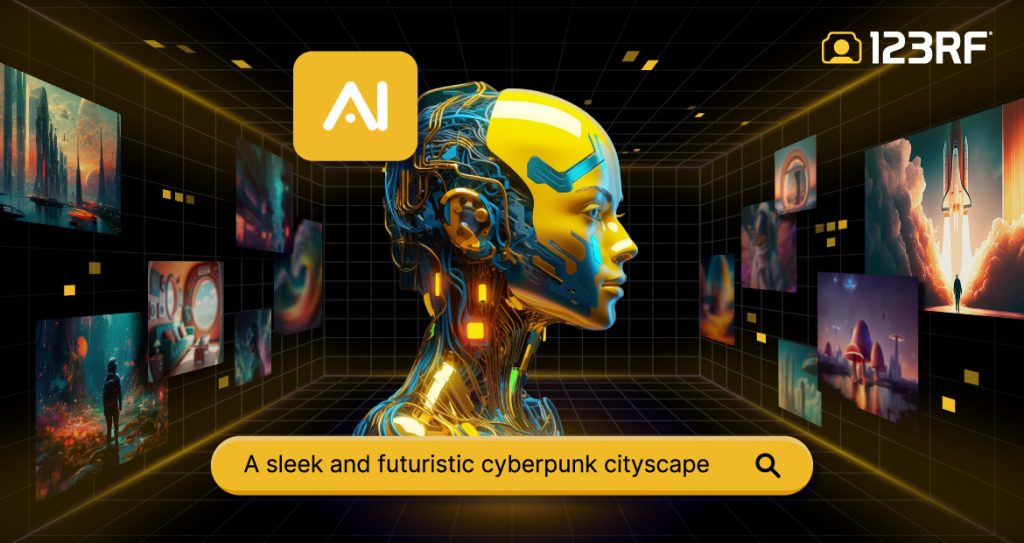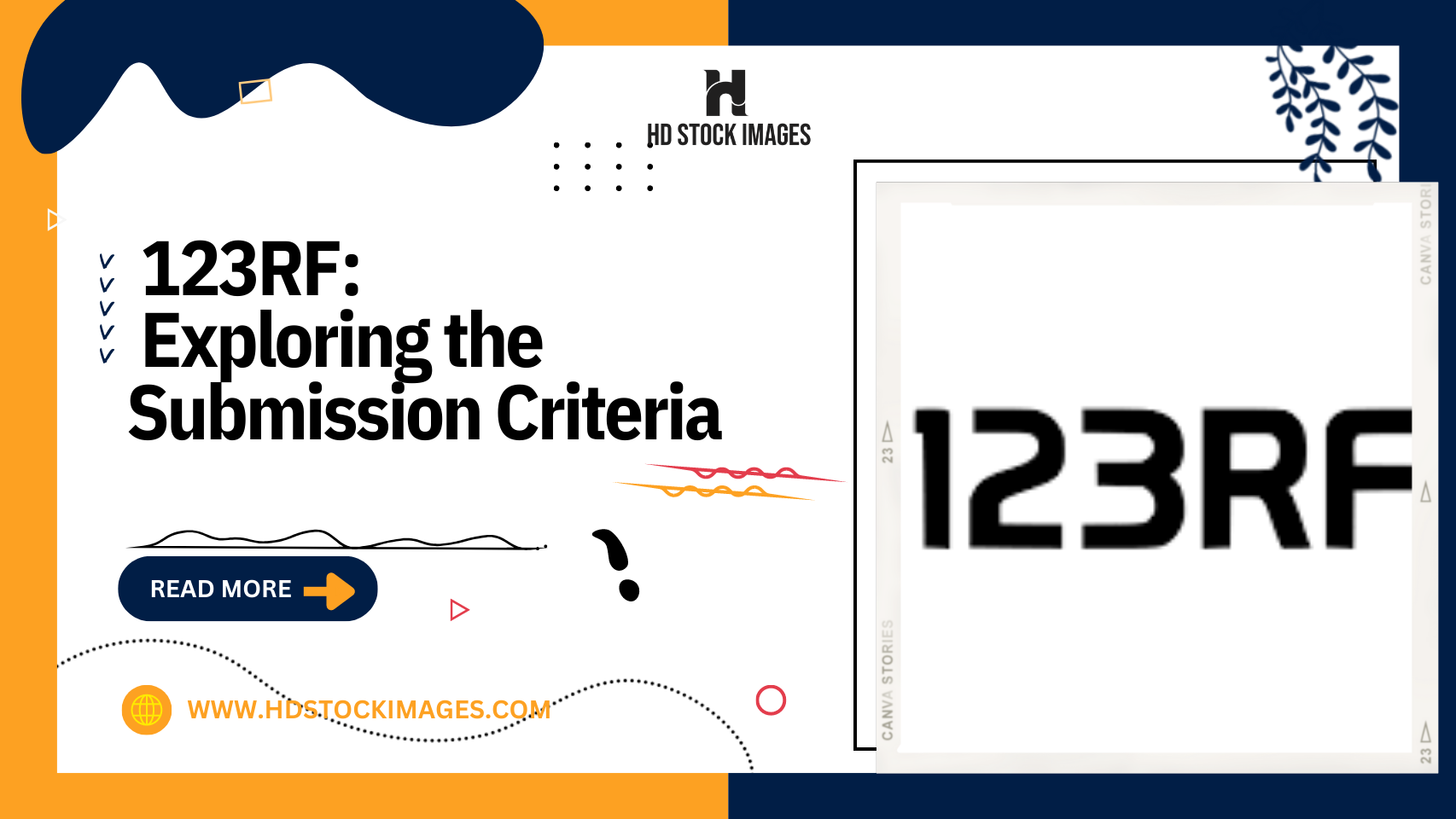1: Introduction:
The acceptance of AI-generated images on stock image platforms, such as 123RF, is an intriguing and evolving topic. As technology continues to advance, AI-generated images are becoming more sophisticated and capable of producing visually compelling content. However, the submission criteria for AI-generated images on platforms like 123RF require careful consideration. Factors such as quality, originality, relevance, legality, and artistic value play a significant role in determining whether AI-generated images meet the platform's standards. This introduction highlights the importance of understanding the specific submission criteria set by 123RF to ensure the successful acceptance and commercial viability of AI-generated images in the stock image industry.Also Read This: How to Upload Photos on 123RF Quickly for Contributors
2: Quality and Technical Requirements:
Quality and technical requirements are vital aspects when considering the acceptance of AI-generated images on stock image platforms like 123RF. These requirements ensure that the images meet the platform's standards and provide a high-quality visual experience for potential buyers. Some key factors include:1. Resolution: AI-generated images should have sufficient resolution to maintain clarity and detail when viewed or printed. Higher resolutions are generally preferred for versatility and scalability.2. File Format: Common file formats like JPEG or PNG are usually accepted. The platform may have specific recommendations or restrictions regarding the file format to ensure compatibility and optimal image quality.3. Color Accuracy: AI-generated images should exhibit accurate and vibrant colors. Proper color calibration and management are essential to ensure the images appear as intended across different devices and media.4. Clarity and Focus: The images should be sharp, well-focused, and free from blurriness or distortions. This ensures that the subject of the image is clear and visually appealing.5. Compression and Artifacts: Compression artifacts or visual distortions should be minimized. Excessive compression can degrade image quality and impact the overall visual experience.6. Aspect Ratio: Images should adhere to standard aspect ratios or maintain a suitable composition that works well for various applications.https://www.youtube.com/watch?v=YaTujTJsx8I&pp=ygVNQWNjZXB0YW5jZSBvZiBBSS1HZW5lcmF0ZWQgSW1hZ2VzIG9uIDEyM1JGOiBFeHBsb3JpbmcgdGhlIFN1Ym1pc3Npb24gQ3JpdGVyaWE%3DAlso Read This: Ways to Enhance Your Creativity Using 123RF’s Stock Image Library
3: Originality and Uniqueness:
Originality and uniqueness are crucial factors when considering the acceptance of AI-generated images on stock image platforms like 123RF. These platforms value fresh and distinctive content that sets itself apart from existing images in their database. Here's how originality and uniqueness are evaluated:1. Avoiding Copyright Infringement: AI-generated images should not infringe upon any copyrights or intellectual property rights. They should be created using original algorithms and not replicate existing copyrighted works.2. Creative Concepts and Perspectives: AI-generated images should offer unique and creative concepts, perspectives, or visual treatments. They should bring something new and fresh to the table, capturing the attention of potential buyers.3. Diverse Subject Matter: Offering a wide range of subject matter enhances the platform's catalog and meets the varied needs of buyers. AI-generated images should explore different themes, genres, and niches to provide fresh perspectives and broaden the platform's content diversity.4. Uncommon Visual Styles: AI-generated images that employ distinct visual styles or artistic techniques can stand out and attract attention. They should showcase innovation and creativity in their execution, creating a visual impact that sets them apart.5. Niche and Specialized Content: Creating AI-generated images that cater to specific niches or industries can be valuable. It allows the platform to serve specialized markets and target audiences that have unique requirements and preferences.Also Read This: Print on Demand and Alamy Images: Exploring Usage Rights and Licensing Opportunities
4: Relevance and Commercial Appeal:
 Relevance and commercial appeal are essential considerations when assessing the acceptance of AI-generated images on stock image platforms like 123RF. These platforms aim to provide images that meet the needs of a broad range of buyers across various industries and sectors. Here's how relevance and commercial appeal are evaluated:1. Market Demand: AI-generated images should align with current market trends and demands. Researching popular topics, themes, and styles can help create images that are more likely to attract buyers.2. Industry Relevance: Images that cater to specific industries or sectors can have a higher commercial appeal. Understanding the target audience and their preferences can guide the creation of AI-generated images that are highly relevant to their needs.3. Conceptualization and Messaging: AI-generated images should effectively communicate a clear concept or message. They should be able to convey ideas, emotions, or narratives that resonate with the target audience, making them more commercially appealing.4. Versatility and Usability: Images that have versatility and can be used in various contexts have a higher commercial appeal. They should have the potential to be utilized in marketing campaigns, websites, presentations, and other creative projects.5. Cultural and Global Relevance: Considering cultural diversity and global appeal can expand the commercial potential of AI-generated images. Images that have cross-cultural relevance or cater to an international audience can attract buyers from different regions.6. Identifying Emerging Trends: Staying updated with emerging trends and visual aesthetics can help create AI-generated images that are ahead of the curve. Being able to anticipate and meet future demands can enhance the commercial appeal of the images.
Relevance and commercial appeal are essential considerations when assessing the acceptance of AI-generated images on stock image platforms like 123RF. These platforms aim to provide images that meet the needs of a broad range of buyers across various industries and sectors. Here's how relevance and commercial appeal are evaluated:1. Market Demand: AI-generated images should align with current market trends and demands. Researching popular topics, themes, and styles can help create images that are more likely to attract buyers.2. Industry Relevance: Images that cater to specific industries or sectors can have a higher commercial appeal. Understanding the target audience and their preferences can guide the creation of AI-generated images that are highly relevant to their needs.3. Conceptualization and Messaging: AI-generated images should effectively communicate a clear concept or message. They should be able to convey ideas, emotions, or narratives that resonate with the target audience, making them more commercially appealing.4. Versatility and Usability: Images that have versatility and can be used in various contexts have a higher commercial appeal. They should have the potential to be utilized in marketing campaigns, websites, presentations, and other creative projects.5. Cultural and Global Relevance: Considering cultural diversity and global appeal can expand the commercial potential of AI-generated images. Images that have cross-cultural relevance or cater to an international audience can attract buyers from different regions.6. Identifying Emerging Trends: Staying updated with emerging trends and visual aesthetics can help create AI-generated images that are ahead of the curve. Being able to anticipate and meet future demands can enhance the commercial appeal of the images.Also Read This: Best Shutterstock Downloader Tools: Enhancing Your Image Acquisition Process
5: Legal and Ethical Considerations:
Legal and ethical considerations are crucial when evaluating the acceptance of AI-generated images on stock image platforms like 123RF. These considerations ensure compliance with laws, regulations, and ethical guidelines. Here are the key aspects to take into account:1. Copyright and Intellectual Property: AI-generated images should not infringe upon any existing copyrights or intellectual property rights. It is important to ensure that the algorithms used to create the images are not trained on copyrighted material or produce images that closely resemble copyrighted works.2. Model Releases and Consent: If AI-generated images include recognizable individuals, it is necessary to obtain proper model releases or consents from those individuals. This ensures that the images can be used for commercial purposes without violating privacy or publicity rights.3. Trademarks and Logos: AI-generated images should not feature trademarks or logos without the necessary permissions. Unauthorized use of trademarks or logos can lead to legal issues and should be avoided.4. Sensitive and Offensive Content: AI-generated images should not contain explicit, offensive, or discriminatory content. Platforms like 123RF have guidelines to prevent the inclusion of such content, promoting a safe and inclusive environment for users.5. Misleading or Deceptive Content: AI-generated images should not promote misleading or deceptive information. They should accurately represent the depicted subjects and avoid manipulations that could deceive or mislead viewers.6. Cultural Sensitivity: AI-generated images should be culturally sensitive and respect diverse perspectives. Avoiding stereotypes and ensuring the images do not perpetuate cultural insensitivity is important to maintain a positive and inclusive environment.@123RF -and do you know what happens when I search “eye”? It’s the same first result of an AI-generated owl image as when I searched “eagle” and there are 5 more owl images on the first page for “eye”. pic.twitter.com/QRVBFOuXm4
— Stephen J. Plant (@StephenJPlant) June 12, 2023

 admin
admin








